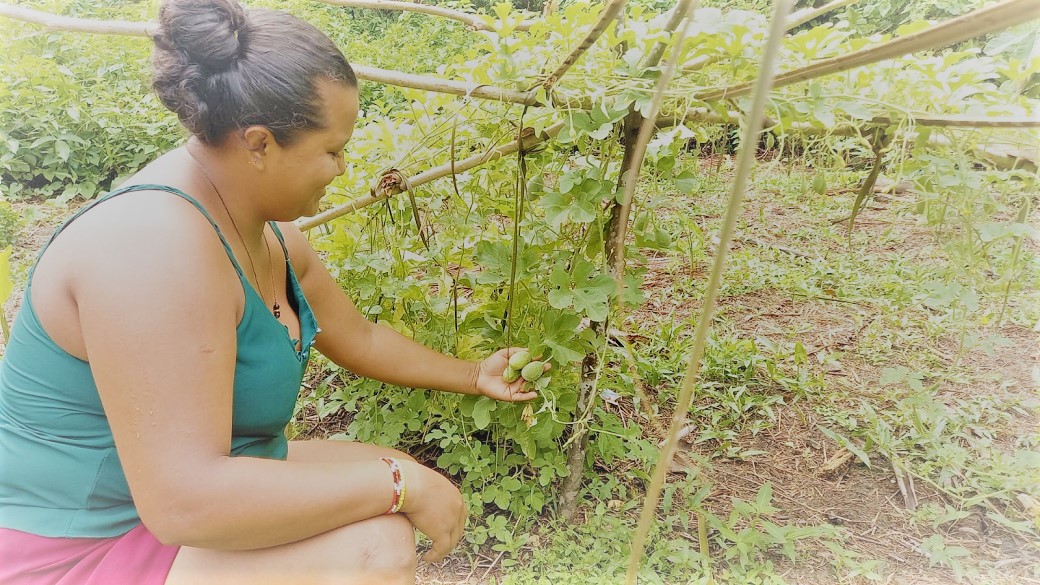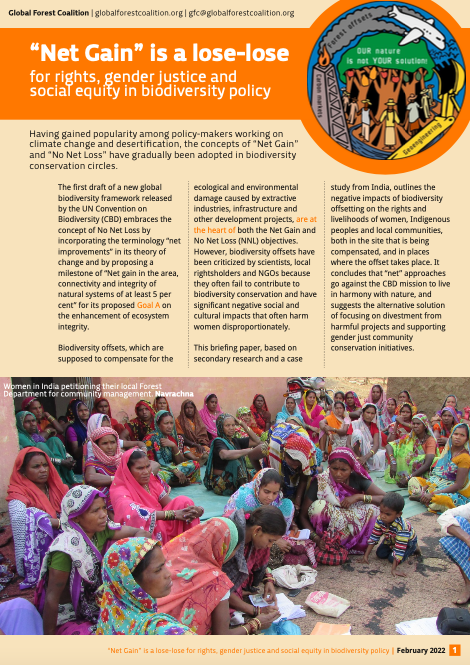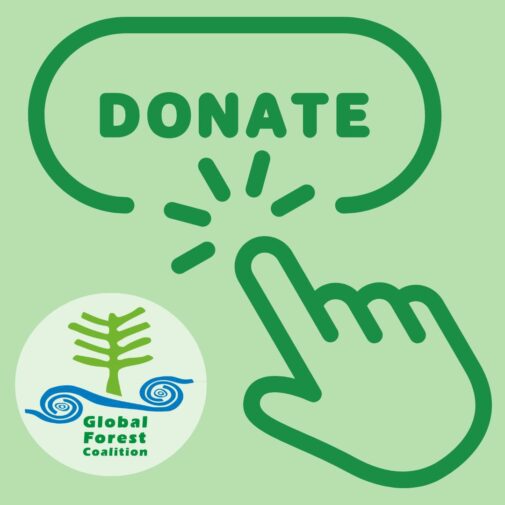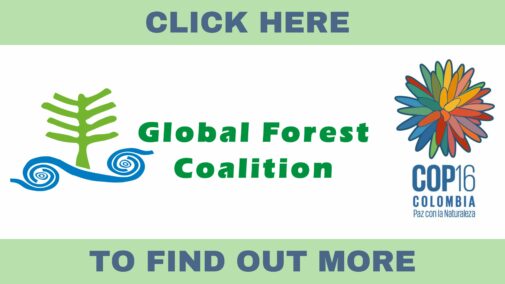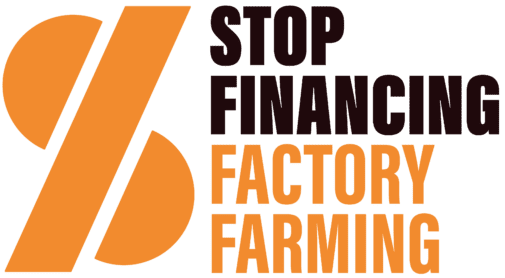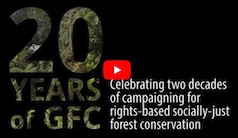Le côté obscur des approches « nettes » de la politique en matière de biodiversité
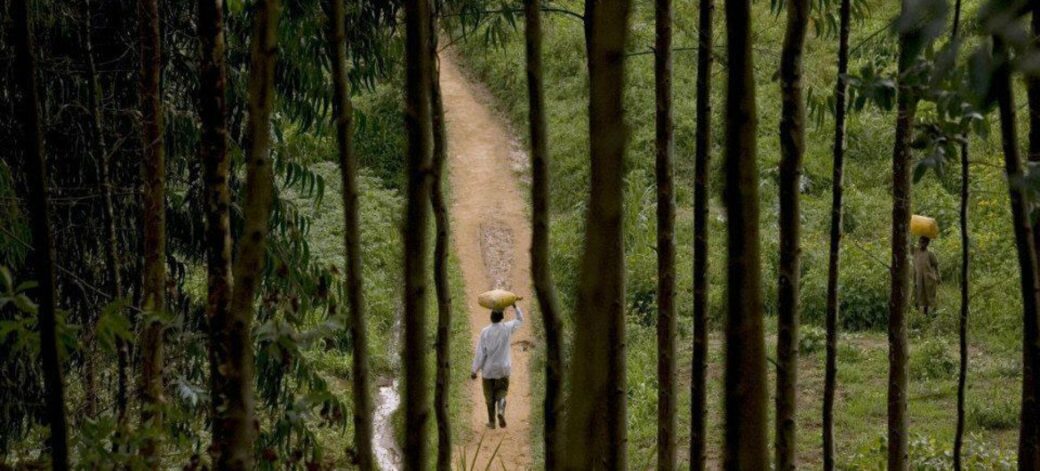
Les concepts de « bénéfice net » et « d’aucune perte nette » ont gagné en popularité au sein des cercles de conservation de la biodiversité et ont été adoptés dans la première ébauche du nouveau cadre mondial sur la biodiversité publiée par la Convention des Nations Unies sur la diversité biologique (CDB). Au cœur de ces concepts se trouvent les compensations écologiques qui sont censées compenser pour toute atteinte à l’environnement causée par les industries extractives, les infrastructures ainsi que d’autres projets de développement. Tel que souligné par les scientifiques et les communautés locales, les compensations écologiques échouent souvent à contribuer à la conversation de la biodiversité et engendrent des impacts néfastes dans les sphères culturelles et sociales, en particulier pour les femmes. Ce document d’information explore les compensations en matière de biodiversité et présente des exemples spécifiques de l’Inde et d’autres pays du monde.
Vous pouvez lire le briefing ci-dessous ou le télécharger ici en anglais
“Net Gain” is a lose-lose for rights, gender justice and social equity in biodiversity policy
Summary
Having gained popularity among policy-makers working on climate change and desertification, the concepts of “Net Gain” and “No Net Loss” have gradually been adopted in biodiversity conservation circles. The first draft of a new global biodiversity framework released by the UN Convention on Biodiversity (CBD) embraces the concept of No Net Loss by incorporating the terminology “net improvements” in its theory of change and by proposing a milestone of “Net gain in the area, connectivity and integrity of natural systems of at least 5 per cent” for its proposed Goal A on the enhancement of ecosystem integrity.
Biodiversity offsets, which are supposed to compensate for the ecological and environmental damage caused by extractive industries, infrastructure and other development projects, are at the heart of both the Net Gain and No Net Loss (NNL) objectives. However, biodiversity offsets have been criticized by scientists, local rightsholders and NGOs because they often fail to contribute to biodiversity conservation and have significant negative social and cultural impacts that often harm women disproportionately.
This briefing paper, based on secondary research and a case study from India, outlines the negative impacts of biodiversity offsetting on the rights and livelihoods of women, Indigenous peoples and local communities, both in the site that is being compensated, and in places where the offset takes place. It concludes that “net” approaches go against the CBD mission to live in harmony with nature, and suggests the alternative solution of focusing on divestment from harmful projects and supporting gender just community conservation initiatives.
The origins of biodiversity offsets
Biodiversity offsets were popularized in the United States in the 1970s, initially as a way to compensate for the damage caused by extractive industries, infrastructure or other projects to biodiversity-rich wetland areas. As Damiens et al. point out, “the progressive emergence of offsetting, NNL and offset ‘markets’” went along with the rise of neoliberalism and “the idea of offsetting pollution emissions was introduced in the mid–late 1970s to make regulatory compliance more flexible in the face of development pressures.” Partly through US-based institutions like the World Bank and the International Finance Corporation (IFC) and a number of US conservation NGOs, offsetting approaches were subsequently introduced as a flexibility mechanism in the Kyoto Protocol.
In the early 2000s, a market-oriented NGO called Forest Trends joined forces with several corporations including Shell International, BP, Rio Tinto, and Total to establish the Business and Biodiversity Offset Program (BBOP). Its main goals were to assist offset developers, promote offsetting policies and regulations and develop standards. It was relatively successful in convincing biodiversity policy-makers to include text on biodiversity offsets in the formal CBD decisions (CBD decisions VIII/17, IX/18, IX/26 and X/21) and a number of safeguard policies of international financial institutions, including the IFC, allowing corporations to damage critical biodiversity habitats on the condition that they provided a biodiversity offset plan in line with – gender-blind – BBOP standards. However, it was less successful in convincing its corporate members and allies to adopt these standards. By the end of the program, in 2018, only 60 companies had done so. Meanwhile, Rio Tinto, one of BBOP’s oldest members, abandoned its corporate-wide net positive impact commitment in 2017. And while around 100 countries allow biodiversity loss to be offset, only 37 have legally binding regulations related to offsetting.
Many conservation groups and agencies were more enthusiastic, as they saw an opportunity in biodiversity offset funding for the expansion of national parks in line with CBD Aichi Target 11 and the proposed target 3 of the draft post-2020 Global Biodiversity Framework.
The mitigation hierarchy
There are many different types of biodiversity offsets. The most straightforward ones are one-off offsets, whereby a developer or a subcontractor (such as a conservation NGO) carries out the offsetting activities for a specific project and assumes financial and legal liability for the offset. An in-lieu fee implies that the developer is required, usually by a government agency, to pay a fee to compensate the damage a project has caused to a third party, which subsequently implements the offset. Moreover, in many countries, biobanking schemes have been developed that allow project developers to buy offsets from a public or private biobank that provides offsetting credits based on a portfolio of various offsetting projects in different locations.
According to the standard promoted by BBOP, biodiversity offsetting should only take place as a final step in a so-called mitigation hierarchy. According to the mitigation hierarchy, projects and initiatives that may harm biodiversity should first try to avoid doing so. If this is not possible, harm should be minimized. Otherwise, any harm should later be restored or rehabilitated. If all these options are not feasible, only then can a biodiversity offset be considered. However, as the OECD concluded, it has been difficult to properly determine whether sufficient efforts were made to avoid or minimize damage before offsets are allowed. In fact, the Global Inventory of Biodiversity Offset Policies (GIBOP) concluded based an analysis of 12,983 projects in 37 countries that 77% of projects did not properly apply the mitigation hierarchy, and thus did not necessarily use biodiversity offsets as a last resource (GIBOP online portal). This means that the overall impact of these “net” approaches was negative.
In fact, there are clear incentives for both project developers and offset developers to compromise the quality of biodiversity conservation efforts, as it makes the offset cheaper. As IUCN has concluded: “Sub–optimal implementation of the mitigation hierarchy has meant that the approach often falls short of achieving its stated aim of ‘no net loss’ of biodiversity, and often fails to consider local populations and cultural values.” It also found that even best-practice offsetting negatively affected biodiversity because many policies allowed the compensation of actual biodiversity loss through projects that only pretended to conserve existing biodiversity from potential, hypothetical destruction in the future. This means that the compensation did not really add any biodiversity (as the hypothetical baselines were often unproven), while the biodiversity losses were real.
Biodiversity offsets have been increasingly critiqued, however, the concepts of “net gain”, “no net loss” and “net zero” have received a significant boost from the climate negotiations. As described above, offsetting approaches were already embedded in the Kyoto Protocol in 1997, and the assumption that greenhouse gas emissions could be compensated for through carbon removals, or even sheer avoidance of emissions, has become exponentially more popular amongst corporations in the aftermath of COP26 in Glasgow. One of the key outcomes of this corporate-dominated climate summit was a formal agreement on rules for carbon trading under the Paris Agreement. While these rules do not directly apply to the voluntary offset market, they gave it a significant boost, and so-called Nature-Based Solutions are seen by many corporations as the most promising offsets. Companies like Shell and Total France have announced plans to invest some USD $100 million per year in nature-based carbon offsets as a solution for their problems with reducing emissions from fossil fuels. Nature-based solutions are thus at the heart of a corporate-dominated convergence of net approaches to both climate change and biodiversity loss.
Relatively new channels for corporate influence on the biodiversity negotiations like the CBD discussions on so-called mainstreaming biodiversity have reinforced biodiversity offsets and broader “net” approaches in biodiversity policy as well, as was already predicted by Dempsey and Collard in 2016. Or as Damiens et al. conclude on the basis of a discourse analysis of 197 policy documents: “offsetting has historically been promoted by reformist approaches, which encourage economic growth without consideration of biocultural limits.”
The social and environmental consequences of biodiversity offsets for women, Indigenous Peoples and local communities
Measures designed to respond to global environmental crises often have a strong and gendered equity dimension. Because the world’s most fertile and accessible forests and other ecosystems were the first to be converted to agriculture or other profitable uses, many of the remaining biodiversity-rich ecosystems are found in areas that are remote or otherwise economically unattractive. Local communities, especially Indigenous Peoples, often live in these areas and face economic and political marginalization. Because of this, these communities are disproportionately dependent upon the non-monetary resources forests and other ecosystems provide for free, including water, firewood, fruits, nuts, bushmeat, fodder and medicinal plants.
The impacts of biodiversity offsets can have varied and differentiated impacts due to the various forms of structural barriers that entrench and maintain discrimination and marginalization based on gender. As a result, women tend to possess far less capital, land and other economic resources than men, which means they are even more dependent upon the resources ecosystems provide for free. This situation is exacerbated in contexts where women face gender-based discrimination and marginalization based on their status (for example, a single female-headed household) or based on their age, ability, class, sexual orientation and gender identity, etc.
When extractive industries and other projects do not avoid, minimize or restore the harm they cause to ecosystems, women in all their diversity, historically underrepresented groups, Indigenous Peoples, and other marginalized local communities are the first victims, as they lose their livelihood resources. A biodiversity offset in another location will not compensate them in any way for this loss. In fact, biodiversity offsets and other net approaches to biodiversity loss fundamentally ignore the reliance on biodiversity for local livelihoods, and de facto dismiss its local economic, social and cultural value. The loss of biodiversity and livelihoods can not only erode local food security and cultural identities, but also impede women’s unpaid care and domestic work. Furthermore, reports from communities have shown how extractive projects, such as commercial plantation projects, have contributed to increased sexual harassment and violence against women (see Forest Cover 62).
A clear example of these gendered social impacts is the biodiversity offsetting scheme for the Bujagali Dam in Uganda, which had great cultural and socio-economic consequences for nearby communities like the Basoga Indigenous Peoples. The area was destroyed by the IFC-financed hydropower project, which affected the livelihoods of 3,000 households. To offset the ecological harm, a plan was developed to protect Kalagala Falls some 20 km away, but this failed to help those living around Bujagali, because agricultural and fishing activities were suddenly banned, causing severe malnutrition. Female producers were unable to grow sufficient food, and many families could no longer afford school fees. And even the protection of Kalagala Falls was not guaranteed, as construction began on a second dam in 2015, flooding a large part of it. The second dam, Isimba, was completed in 2019, and to offset some of the damage to the previous offset, a larger area has become subject to strict conservation and tourism exploitation, causing adjacent communities to fear that their farming and fishing activities will also be banned.
Conservation measures that are financed by biodiversity offsets can also harm the livelihoods of women, Indigenous Peoples and local communities in the offset site. For example, in Madagascar, a mining project that sought to have a “net positive impact” on biodiversity displaced communities without adequate compensation and imposed strict conservation and land use restrictions in the offset area that threatened the food security of local communities in that site. While little in-depth research has been done on the specific gendered social impacts of biodiversity offsets, offset developers or subcontractors are legally liable for delivering measurable biodiversity gains, which is a clear incentive for so-called fortress conservation measures. That is, the need to guarantee certain quantifiable biodiversity outcomes incentivizes developers to ban sustainable use or even access to the biodiversity site by women and other local inhabitants because the outcomes of sustainable use cannot always be easily predicted or quantified. Sustainable use is subject to a broad range of variable social, economic and cultural factors, and thus even when there is significant evidence of the long-term positive impact on biodiversity, the medium- and short-term biodiversity outcomes tend to be hard to measure.
The following case study from India demonstrates how offsets and other net approaches not only negatively affect those who lose their forests, but also trigger fortress conservation and other top-down, rigid land management schemes in the offset sites.
Offsetting deforestation in India and the impacts on Indigenous Peoples and local communities
India’s main legislation for forest conservation is the Forest Conservation Act of 1980, which restricts the use of forestland for non-forest purposes while preventing deforestation. The legislation, however, does not ban deforestation; around 921,000 hectares was deforested between 1980 and 2004. The following year, the Compensatory Afforestation Management and Planning Authority (CAMPA) was created for the management of compensatory afforestation funds and net present value of forests cleared for industrial and infrastructure projects. Since the inception of CAMPA, deforestation has continued at a rate of about 46,000 ha annually; a total of 253,179 ha were cleared between 2008 and 2019.
Compensatory afforestation and net present value are meant to ensure implementation of India’s National Forest Policy (1988), which aims to increase forest cover to 33% and includes a statutory offset for companies seeking permission to deforest. While ostensibly a tree-planting project, Compensatory afforestation is, at its core, a tree-cutting project; the felling of a natural forest is behind each plantation that exists through this program. Its purpose, therefore, is to compensate for the loss of “land by land” and loss of “trees by trees.” However, this policy of compensatory payment for forest loss has far reaching impacts on communities as well as on forests, both at the site of deforestation and at the site of offsetting through plantations.
Indian forests are ecological systems that have deep linkages with the communities that live within and around them. Payments made to offset deforestation account not only for the loss of forests but also for the loss of the flow of goods and functions to the Indigenous Peoples and local communities. Forests provide wood, non-timber forest products, fuel, fodder, water and grazing ground. They also maintain symbiotic relationships with communities, and particularly women, through spiritual, cultural, aesthetic and communal practices. Forest loss therefore not only affects livelihoods, but also imposes an additional burden on women, creating inequality in communities where negative outcomes are distributed unevenly. Moreover, a highly centralized forest governance in India allows the state to undertake compensatory afforestation, collect and disburse compensatory afforestation funds and approve deforestation, violating the rights and process of free, prior and informed consent of Indigenous Peoples and local communities, as enshrined in the Forest Rights Act of 2006. This also has severe implications for women, who often lack secure land tenure rights and are traditionally excluded from governance.
This colonial model of fortress conservation is further reinforced in the implementation of compensatory afforestation where funds are used by the state forest departments to not only carry on plantation drives without any participation and consultation with Indigenous Peoples and local communities, but also to forcibly relocate communities from protected areas. Compensatory afforestation thus facilitates the dispossession of land from communities and its concentration in the hands of corporations and the Forest Department.
As Ghosh and Lohmann point out, both the concept of “no net loss” and “compensatory forests” and the money it produces are being used against forest communities in four ways:
- community-held forest lands, agricultural areas and pasture are being acquired by the state and companies in the process of obtaining land for plantations;
- CAMPA funds are being used in securing and extending the territorial limits of existing wildlife conservation areas;
- community and tenurial rights are denied and community access to forests is curtailed; and
- impermissible deforestation is greenwashed and legitimized by creating the illusion that the destruction of natural forest habitats can be compensated in monetary terms and through plantations.
The impact of compensatory afforestation and CAMPA on forest communities and their rights over resources has been extensively documented. In Chhattisgarh, plantations were forcibly imposed by the Forest Department over 63 ha of community land in a village where a Gond Indigenous woman was deprived of her rights to 2.5 acres of land. In the coal mining belt and adjoining areas, women confronted forest department officials and stopped a similar process. The Forest Department responded by trying to forcibly plant trees, destroying villagers’ traditional crops in the process. Indigenous forest communities have been evicted from their swidden agricultural land in Telengana to pave the way for afforestation programmes under the Green India Mission, funded by CAMPA.
Meanwhile, in Odisha, food crops and sal trees that grew in community village lands were replaced by teak and chakunda (Cassia occidentalis). In Jharkhand, the Forest Department burned down village grazing pastures to set up compensatory afforestation plantations. Forcible relocation of communities from protected areas in Andhra Pradesh and Maharashtra using the CAMPA funds has also been reported.
As forest landscapes are converted into mines, industries, reservoirs and highways, communities often migrate, while those remaining behind are left to deal with severe alienation from their immediate environment. This legalized deforestation and compensation through offsets severely impacts women and their daily livelihood needs. With Indigenous women losing their rights to and free access to natural resources, the rights to commercialized and valuable trees and lands tend to shift away from women.
A 2018 compilation by the Community Forest Rights Learning and Advocacy Group in their National Brief on CAMPA concluded that the compensatory afforestation fund creates a perverse incentive for forest diversion and facilitates the dispossession of tribals, other traditional forest dwellers, vulnerable tribal groups and pre-agricultural communities, pastoralists and women from community forest lands and resources. Compensatory afforestation also destroys natural biodiversity and disturbs local ecosystems on account of its preference for monoculture commercial plantations (often exotic or invasive species) and threatens the food security and livelihood of forest-dwelling communities by replacing food habitats with monoculture plantations. Meanwhile, the diversion and use of forest land under CAMPA undermines the rights and authority of village councils to govern and manage community forest resources, bypassing the requirement of free, prior and informed consent.
India’s internal offsetting mechanism is a glaring example of how “no net loss” accounting of deforestation and biodiversity, not only fails to halt deforestation but also incentivizes land concentration and forced land acquisitions by imposing compensatory afforestation on community lands, thus encroaching upon the rights of Indigenous Peoples and local communities and their common forest land and resources. The result is irreversible loss of their livelihoods and symbiotic relationship with forests, which is accentuated by the gendered impact on women.
Conclusions and recommendations
Biodiversity loss is often irreversible, as extinction is forever. The scientific basis for the assumption that biodiversity loss in one location could be compensated for or even offset by supposed gains in another location is thus by definition questionable. But as outlined above, an even more serious concern is that “net” approaches to biodiversity loss inherently ignore the local social, economic and cultural values of biodiversity, especially for rightsholder groups that disproportionately depend on these values, such as women in all their diversities, Indigenous Peoples and local communities. There is a definite need for more research on the gendered social impacts of biodiversity offsets, but conceptually it is clear that the “net” approach is fundamentally at odds with the CBD vision of living in harmony with nature.
In light of the seriousness of the biodiversity crisis, there also is no ecological space left for “net” approaches. Further biodiversity loss must be avoided at all costs if an irreversible planetary crisis is to be avoided. This requires, first and foremost, divestment from biodiversity destruction, including by redirecting the estimated US $5-7 trillion that governments invest in perverse subsidies and the estimated US $2.6 trillion that the largest international financial institutions invested in supporting sectors and projects harmful to biodiversity.
Despite the biodiversity crisis, examples abound of Indigenous and non-Indigenous communities who have been living in true harmony with nature for generations (see the Community Conservation Resilience Initiative and ICCA-Consortium). Such community conservation initiatives, which are often women-led, should be recognized and supported in biodiversity policies and laws, and there must be recognition of the governance rights of Indigenous Peoples, local communities and women over the areas they have long inhabited. In particular, there must be more attention to women’s systematic engagement in governance and a deeper analysis and understanding of gender and how inequities are created and exacerbated within communities, institutions and biodiversity schemes. Moreover, it is essential that biodiversity policy development is guided not by corporations, but rather by the views and knowledge of these rightsholders on the ground.

